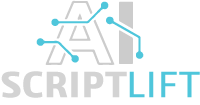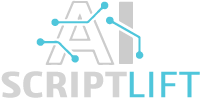
How to Leverage AI for Audience Segmentation
In today’s fast-paced digital landscape, understanding your audience is more crucial than ever. With the advent of artificial intelligence (AI), businesses can now segment their audiences more effectively than ever before. This blog post will guide you through the process of leveraging AI for audience segmentation, ensuring that your marketing strategies are not just effective but also efficient. We’ll explore how platforms like JAXI.AI can enhance your digital content strategy, improve local SEO, and streamline your overall approach to audience engagement.
Understanding Audience Segmentation
Before diving into the nitty-gritty of AI tools, let’s clarify what audience segmentation is. Simply put, audience segmentation is the process of dividing your target market into smaller, more defined groups. These groups can be based on various factors such as demographics, behaviors, interests, and more. Think of it as slicing a pizza into different pieces; each slice represents a unique segment of your audience, allowing you to tailor your marketing efforts to meet their specific needs.
Why is this important? Well, when you understand the different segments of your audience, you can create more personalized content that resonates with them. This is where AI comes into play. AI tools can analyze vast amounts of data quickly and accurately, identifying patterns and trends that would take humans much longer to discern. By leveraging AI for audience segmentation, you can ensure that your marketing messages hit the mark every time.
For instance, if you’re using AI-Powered Content Creation tools, you can generate tailored content that speaks directly to each segment of your audience. This not only boosts engagement but also enhances your overall digital content strategy.
Choosing the Right AI Tools for Audience Segmentation
With so many AI tools available, it can be overwhelming to choose the right one for your needs. However, focusing on a few key features can help you narrow down your options. Look for tools that offer:
- Data Analysis Capabilities: The ability to analyze large datasets is crucial. Tools like JAXI.AI excel in this area, providing insights that can help you understand your audience better.
- Integration with Existing Systems: Ensure that the AI tool you choose can seamlessly integrate with your current marketing platforms. This will save you time and effort in the long run.
- User-Friendly Interface: A tool that is easy to navigate will allow you to focus more on strategy rather than getting bogged down by technicalities.
Once you’ve identified the right tools, it’s time to put them to work. For example, using AI Tools for Content Creation, you can segment your audience based on their online behavior, preferences, and engagement levels. This data can then inform your content strategy, ensuring that you’re delivering the right message to the right people at the right time.
Data Collection and Analysis
Now that you have your AI tools in place, the next step is data collection. This is where the magic happens. You’ll want to gather data from various sources, including:
- Website Analytics: Tools like Google Analytics can provide valuable insights into user behavior on your site.
- Social Media Insights: Platforms like Facebook and Instagram offer analytics that can help you understand your audience’s preferences.
- Email Marketing Metrics: Analyzing open rates, click-through rates, and engagement levels can provide insights into your audience’s interests.
Once you have this data, it’s time to analyze it. AI tools can help you identify patterns and trends that may not be immediately obvious. For instance, you might discover that a particular segment of your audience engages more with video content than written content. Armed with this knowledge, you can adjust your content strategy accordingly.
Moreover, AI can help you perform predictive analysis, allowing you to anticipate future behaviors based on past data. This is incredibly valuable for creating targeted marketing campaigns that resonate with your audience. By leveraging AI for data analysis, you can enhance your digital content strategy and ensure that your efforts are not just reactive but proactive.
Creating Segments Based on Insights
With your data analyzed, it’s time to create audience segments. This is where you can get creative! Based on the insights gathered, you can segment your audience into various categories. Here are a few examples:
- Demographic Segmentation: This includes age, gender, income level, and education. For instance, if you find that a significant portion of your audience is young professionals, you might tailor your messaging to appeal to their lifestyle.
- Behavioral Segmentation: This focuses on how users interact with your brand. Are they frequent buyers, or do they just browse? Understanding these behaviors can help you create targeted campaigns.
- Geographic Segmentation: If you have a local business, understanding where your customers are located can help you optimize your local SEO efforts.
Once you’ve established your segments, it’s essential to document them. This will not only help you keep track of your audience but also allow you to refine your strategies over time. For example, if you notice that a particular segment is not engaging as expected, you can revisit your approach and make necessary adjustments.
Additionally, using AI-Powered Business Profile Management can help you maintain accurate and up-to-date information about your audience segments, ensuring that your marketing efforts are always aligned with their needs.
Personalizing Content for Each Segment
Now that you have your audience segments defined, it’s time to personalize your content. Personalization is key to engaging your audience effectively. Here’s how you can do it:
- Tailored Messaging: Use the insights from your audience segments to craft messages that resonate with each group. For example, if one segment is particularly interested in sustainability, highlight your eco-friendly practices in your messaging.
- Dynamic Content: Consider using dynamic content on your website or in your emails. This means that the content displayed changes based on the user’s segment. For instance, a returning customer might see different offers than a first-time visitor.
- Targeted Campaigns: Use your segments to create targeted marketing campaigns. This could include email campaigns, social media ads, or even personalized landing pages.
By personalizing your content, you’re not just throwing spaghetti at the wall and hoping something sticks. You’re strategically delivering messages that are relevant to your audience, which can significantly boost engagement and conversion rates. Plus, with tools like Auto Blogging, you can automate much of this process, saving you time and effort.
Measuring the Effectiveness of Your Segmentation
Once you’ve implemented your audience segmentation strategy, it’s crucial to measure its effectiveness. After all, what gets measured gets managed! Here are some key performance indicators (KPIs) to consider:
- Engagement Rates: Are your audience segments engaging with your content? Look at metrics like click-through rates, time spent on page, and social media interactions.
- Conversion Rates: Are your segmented campaigns leading to conversions? Track how many users from each segment are taking the desired action, whether that’s making a purchase, signing up for a newsletter, or downloading a resource.
- Customer Feedback: Don’t underestimate the power of direct feedback. Surveys and polls can provide valuable insights into how your audience feels about your content and messaging.
By regularly measuring these KPIs, you can refine your audience segmentation strategy over time. If you notice that a particular segment isn’t responding as well as you’d hoped, don’t be afraid to pivot and try a different approach. Remember, the goal is to create a dynamic strategy that evolves with your audience.
Conclusion
Leveraging AI for audience segmentation is not just a trend; it’s a necessity in today’s digital marketing landscape. By understanding your audience better, creating tailored content, and measuring your efforts, you can significantly enhance your marketing strategies. Platforms like JAXI.AI provide the tools you need to make this process seamless and effective. So, why wait? Start leveraging AI today and watch your audience engagement soar!
FAQs
What is audience segmentation?
Audience segmentation is the process of dividing your target market into smaller, more defined groups based on various factors such as demographics, behaviors, and interests. This allows for more personalized marketing efforts.
How can AI help with audience segmentation?
AI can analyze large datasets quickly, identifying patterns and trends that help businesses understand their audience better. This enables more targeted and effective marketing strategies.
What are some key features to look for in AI tools for audience segmentation?
Look for tools with strong data analysis capabilities, integration with existing systems, and a user-friendly interface to streamline your audience segmentation efforts.
How can I personalize content for different audience segments?
Personalize content by tailoring messaging, using dynamic content, and creating targeted campaigns based on the specific interests and behaviors of each audience segment.
Why is measuring the effectiveness of audience segmentation important?
Measuring effectiveness helps you understand how well your segmentation strategy is working. By tracking engagement and conversion rates, you can refine your approach and improve your marketing outcomes.

